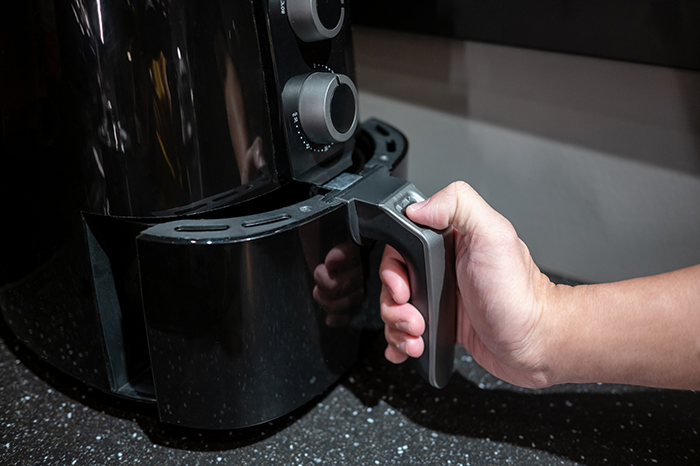
Air fryers are the best thing since sliced bread. They are perfect for cooking frozen foods, roasting vegetables, and reheating that leftover piece of pizza in your fridge without making the crust soggy. There are entire cookbooks dedicated to recipes you can make in the air fryer — and they hardly take up a square foot of space on the kitchen counter.
Did you know you can test forage moisture in an air fryer, too?
Testing moisture is critical to maintain forage stability during storage. Hay that is too high in moisture can develop mold and start heating, which could lead to spontaneous combustion and cause a fire. Harvesting forage at proper moisture levels is also key for good silage fermentation and quality at feedout.
A news release from the University of Arkansas Division of Agriculture notes that farmers can use commercial probes to test forage moisture, but these devices can be tedious to calibrate. John Jennings, a former extension forage specialist, says microwaves are proven tools for measuring forage moisture — as long as it isn’t the microwave in your home kitchen since drying forage in one can create a terrible odor. And then there are more makeshift tactics like the hand-constructed vortex dryer developed by Penn State University Extension that involves PVC pipe and a hair dryer.
Using an air fryer, on the other hand, may be a simpler, safer, and less smelly alternative. Jennings created this fact sheet to explain how to do so.
Take a core sample of hay from test bales; chop hay into small pieces, less than 1 inch; and weigh out 100 grams of material. Place this measured sample in the air fryer and run the appliance at 250ºF for about 30 minutes. Then, weigh the dried sample and subtract the dried weight from the original 100 grams. The number of grams of moisture lost equals the percent of moisture in hay.
The fact sheet also includes instructions to calculate forage moisture with a sample weight other than 100 grams. In this case, follow the same drying procedure, subtract the dried weight from the starting weight, divide that number by the starting weight, and multiply the answer by 100.
Brian Haller, a county extension staff chair with the University of Arkansas, has used air fryers in corn silage moisture demonstrations and considers them a better alternative to microwaves. “For many years, we used microwave ovens and would teach producers how to do that. Microwave ovens work, but you have to make sure there is a small cup of water in the microwave, or it could dry the forage out too fast and cause a fire,” Haller said.

